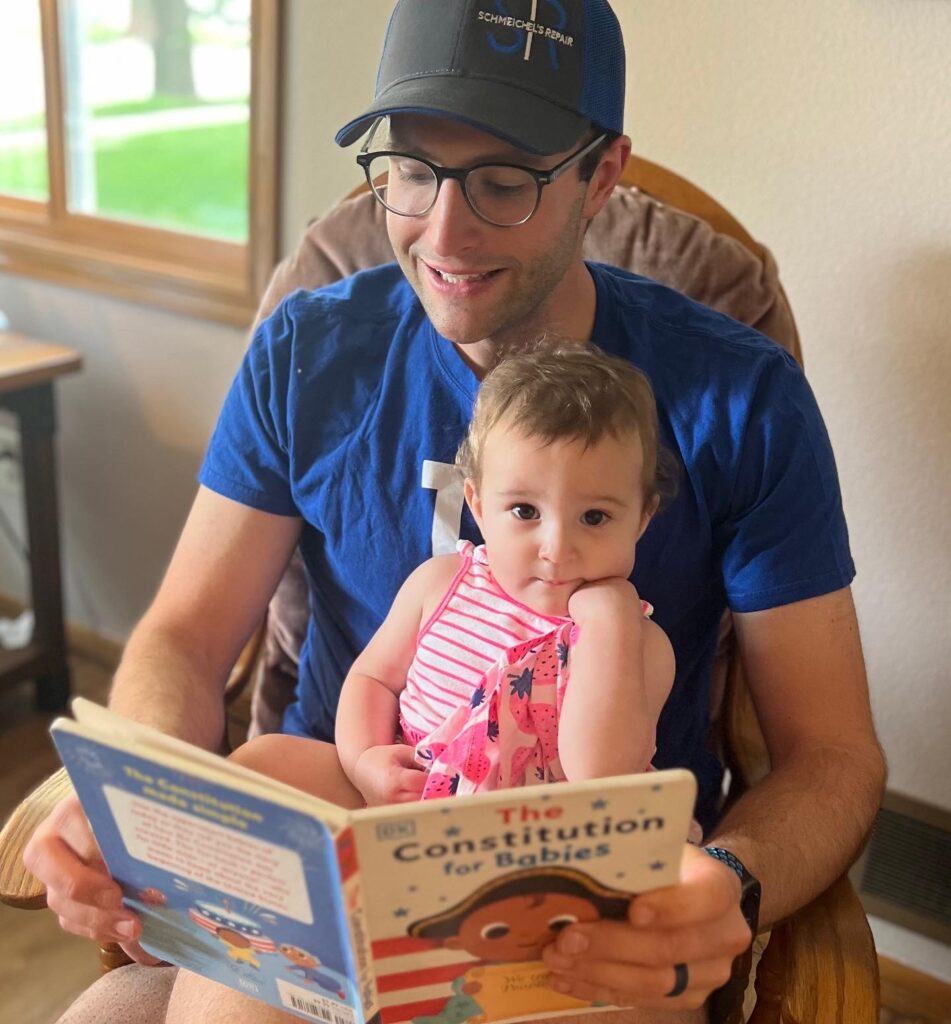Primary documents prompt reflection on history. Landen Schmeichel sees this often when using documents in his Advanced Placement US History course at Legacy High School in Bismarck, North Dakota. During a unit on the Progressive movement, he asked students to read an excerpt of Justice David Brewer’s 1908 ruling in Muller v. Oregon. It upheld an Oregon State law prohibiting women from working more than 10 hours in a day. After they read the excerpt, Schmeichel showed students a textbook summary of the ruling that called it a win for women. But in the opinion, Brandeis referred to women as a class of persons needing protection because they were physically weaker than men. He also argued that their energies needed to be conserved for service in the home. “Wait a minute,” a female student said. “What if I want to work more than 10 hours? Wouldn’t this ruling do the opposite of what the equal protection clause of the 14th amendment intends?”

Discussion then shifted to the meaning of equality in the Fourteenth Amendment. Does equal protection under the laws really entail treating some people—but not others—as members of a protected class? “This is sexist!” the female student protested. “If I apply for a job at Home Depot, and they tell me they’re hiring a man because he can work more hours in a day than I can, I’ll be mad. I’ll never shop there again!”
Liberty and Equality: Ideas That Shaped America
Primary documents prompt reflection on powerful ideas. Many of the documents Schmeichel uses reflect American political theory, probing the interrelated ideas of liberty and equality. “Those ideas birthed what I would say is the greatest nation in human history. Our job as educators is to engage students in conversation about what those ideas mean. When we engage with those ideas, we’re not diminishing what history is as a discipline; we’re elevating it. We’re reflecting on what matters to us most—what we aspire to be not only as individuals, but collectively as a nation. We need such discussion if, as Federalist 1 puts it, we want a government based on reflection and choice rather than accident and force.”
Schmeichel finds the well-curated primary documents he needs for his teaching in Teaching American History’s Core Document volumes, which excerpt key documents of American history, preface them with a scholar’s summary of their historical context, and suggest questions for discussion. “This collection, I would argue, is the preeminent source for primary documents that are accessible to students. And the online versions are free.”
An Easier and Completely Rewarding Way to Teach
When Schmeichel began teaching APUSH, he relied on the textbook. “I had students read a chapter a week. In class I lectured over the chapter’s major arguments and major terms, often using PowerPoint slides. My AP pass rates were decent—above the national average. But if a student said, ‘There’s a term on page 242 I don’t understand,’ I’d have to reply, ‘I have no idea myself. Let’s read that passage and try to figure it out.’ That type of engagement wasn’t too beneficial for students.”
He began looking for primary sources to flesh out the story of history, which led him to TAH.org and to its Master’s program centered around reading and discussing documents. Awarded the James Madison Foundation Fellowship in constitutional studies for North Dakota in 2021, he immediately enrolled in MAHG. Soon he was reading about history through the words of those who lived and shaped it, gaining insight into their decision-making.
“Three years down the line, I understand those documents and can ask the questions that help students wrestle with really hard topics. We can discuss history from multiple perspectives. Now my job is not only easier; it is completely rewarding.
A Safer, More Effective Way
“It’s also a safer way to teach,” Schmeichel says. “When you say, ‘This is the textbook that I use,” you’re saying, ‘This is the narrative that students are being sold.’ That’s a dangerous way to put yourself out there as an educator.” To prevent misunderstandings—and help students better understand the contest of ideas that shaped history—Schmeichel gives students firsthand access to those ideas.
“For example, when I’m teaching the antebellum South, I let students discover for themselves the arguments made by Southern slaveholders. I give them documents by John C. Calhoun, James Henry Hammond and George Fitzhugh, who claim the state must preserve chattel slavery because that’s what’s best for African Americans. Students react in shocked disapproval, saying the arguments are racist. Yet they see how the arguments might have persuaded Northerners unfamiliar with slavery’s reality. This makes them uneasy. Then I ask them to consider whether those arguments are consistent with the founding ideals of liberty and equality, principles that Abraham Lincoln often discussed in his great speeches. Students who compare the proslavery arguments to Lincoln’s arguments easily see that slavery violates the principles on which self-government depends. It moves the conversation from our personal feelings to the facilitation of critical thought.”
Schmeichel connects each document he assigns to a learning standard and objective, ensuring he covers the wide-ranging requirements for the APUSH course. Then he uses the documents to shape a narrative about Americans’ ongoing attempt to realize the ideals of liberty and equality. “If you tell students, here are the 540 things you need to memorize before you take the AP test on May 10, they’ll say, ‘There’s no way I’ll pass!’ But if you teach thematically, you’ll help students draw connections between events and ideas. They remember much more.”
Primary documents prompt students to reason through the implications of powerful ideas, like liberty and equality. Schmeichel encourages this by guiding students in rhetorical analyses of key texts. “My last graduate class in the MAHG summer residential program was on American political rhetoric,” he says. “Many of the readings were from Lincoln.” Much of today’s political rhetoric relies on pathos—an appeal to the emotions. Lincoln’s makes masterly use of the other two rhetorical elements Schmeichel teaches students to identify: logos and ethos. Logos appears in Lincoln’s stunningly clear arguments against slavery. Ethos appears when he quotes authorities his audience recognize as credible. “He quotes Jefferson constantly. He refers to his letters, to the original draft of the Declaration, and to Jefferson’s 1784 draft of a law that was the model for the 1787 Northwest ordinance. All of those sources show Jefferson viewing slavery as immoral and destructive to both races.” Reading Lincoln reinforces the critical importance of primary source work to the study of history, Schmeichel says.
Encouraging Students to Join the American Story

Most important, primary documents make the people of the past relatable and understandable. This can encourage students to join the American story and help to shape it. Schmeichel sees this as critically important. Americans suffer from “an epidemic of non-involvement. We believe we are separate from our institutions.” People who are disgruntled with civic life see it as controlled by those they didn’t vote for and can’t trust, so they don’t engage in “the gritty but civil dialogue” self-government requires. “That means that concern to perpetuate our institutions is dwindling.”
One way of countering non-involvement is to explain the social contract—our consent to government—as a daily recommitment. “Every day when I leave my house, I stop at a stop sign. I turn on my blinker. Those are all micro components of the social contract we’ve agreed to. These are the ways we preserve each other’s liberty and equality.” Another way is to invite students into a document writer’s story. Frederick Douglass’s autobiography, for example, appeals to students because it shows a young person coming of age in a society that obstructs his agency. His story of secretly learning to read shows students that reading confers power, because it gives us access to powerful ideas.
One of Schmeichel’s students commented on the motivational power of primary documents in a thank-you note she sent him:
In my previous history classes, I was taught through memorization and secondary source[s] . . . . This year, I’ve had the opportunity, thanks to you, to explore history through primary sources, living breathing sources, and have gained a far greater . . . understanding . . . . Primary sources that will stay with me are: “What to the Slave is the Fourth of July?” by Frederick Douglass, . . . Abraham Lincoln’s Fragment on the Constitution and Union, and George Washington’s Farewell Address. I’ll remember the impactful discussions we had on Vietnam [after] reading Tim O’Brien’s The Things They Carried. I’ll keep my pocket Constitution with me, along with the primary sources, to reminisce on the year and continue to learn.”
The student who sent the note recently participated in the United States Senate Youth Program, travelling to Washington and meeting President Biden, Secretary of Transportation Pete Buttigieg, Secretary of State Anthony Blinken, and 78 current senators. She is an “incredible” student who might herself enter politics. But reading primary documents can profoundly affect students who have other goals. Another student thanked Schmeichel for showing through his teaching a way out of apathy and toward moral self-development:
“. . . Instead of fleeing from the problems of today, you believe that you combat them . . . by educating. You create your own change by recruiting others to your cause. Frederick Douglass captures my sentiments about this . . . when he says, ‘I would unite with anybody to do right and with nobody to do wrong.’”
“What is meaningful for me as I look to the next 27 years of teaching is what my students say they learned in my classroom,” Schmeichel says. “If they can point to ideas we discussed and say, ‘This is how I want to live, because there’s inherent virtue in this way of life,’ then I can deem my career as an educator a success. . . . That’s what teaching through primary sources makes possible.”




